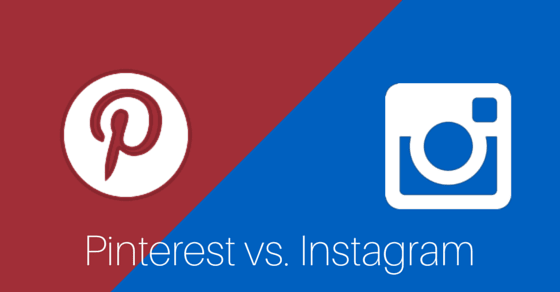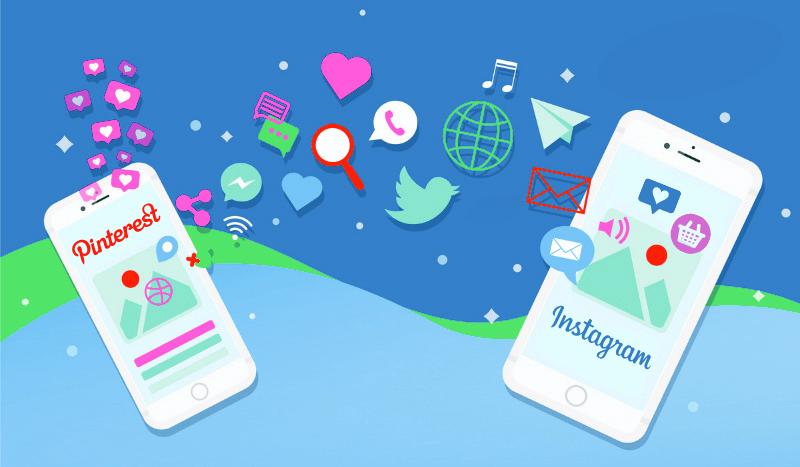
Pinterest Or Instagram For Your Business?
Instagram vs. Pinterest
Instagram and Pinterest are in reality very different. Knowing these intricacies will help build your business through social media more effectively.
Visual social platforms like Pinterest and Instagram, are hot with brands and consumers. The human brain likes visuals. People process images 60,000 times faster than text and 90 percent of information transmitted to the brain is visually based.
But in order to make this work for your business, you need to understand how to use the visual tools available, including their differences.
Main Differences Between Them:
Usage
Instagram allows users to take pictures and videos from a mobile device, apply filters and a caption, and then share the image on a variety of social networks. Instagram users are looking for a much more personal experience with the brands they follow and engage with. The content shared on Instagram should give your audience an authentic view into your marketing business.
With Pinterest, a user’s intent tends to be focused on the discovery and curation of other users’ content. Similar to search engines, consumers can utilize Pinterest to search for specific content, products, tips or inspiration. They can then create visually appealing boards by pinning and grouping the digital content they discover.
Links
On Pinterest, every pin is a link to the source of the image, usually an external site. Therefore, one of the common goals for businesses on this platform is generating website traffic and using Pinterest for SEO purposes. Instagram only has one place you can direct people to a link and that is in the bio so not a major factor here.
Target audience
Pinterest users are predominantly female. In fact, women account for about 70 percent of Pinterest users and are about five times as likely to use the virtual scrapbooking tool as men, the largest gender difference of any social network. Pinterest users also tend to skew a little bit older, although the core demographic is still 18-34 year olds, representing 56 percent of users.
Compared with Pinterest, men and women are more evenly represented on Instagram. Fifty percent of the Instagram users are outside of the United States, making for a more global demographic. This network is also more popular with the younger crowd—two-thirds are between the ages of 18 and 34 and popularity drops a bit with the older part of this demographic.
Photos
Instagram makes it simple to create stunning photos that make your business look professional and creative. Instagram is able to apply digital filters to photos while Pinterest cannot within the application. Pinterest users pin existing photos or alter their own before pinning in programs like, Canva.
Engagement
Instagram is currently much more conversational than Pinterest. So, encourage comments when sharing and get market feedback silmultaneously. In the description field of your post, ask your followers for comments and questions about the content you are providing to encourage them to get a little closer to your business and what you are representing.
Hashtags
Optimize your chances of being found by users with the inclusion of key hashtags. Hashtags are encouraged on both Pinterest and Instagram, but the quantity used on each digital platform varies. Don’t clutter the beauty of a pic on Pinterest with more than one or two hashtags. Instagram allows up to 30, however a thoughtful 8-10 will work best.
Storytelling
On Pinterest you can do this through the strategic use of themed boards. This is a great way to cultivate an engaged audience. Telling stories visually equates to even more engagement. Using promotions and contests on Pinterest can be very effective when integrated with your storytelling.
Instagram enthusiasts want a personal experience with a brand that is engaging, informative and accessible through quick messages, photos and short videos. Instagram pictures can give your clients a creative connection with your company and you, while providing unique ways to communicate about marketing products and services customers care about.


